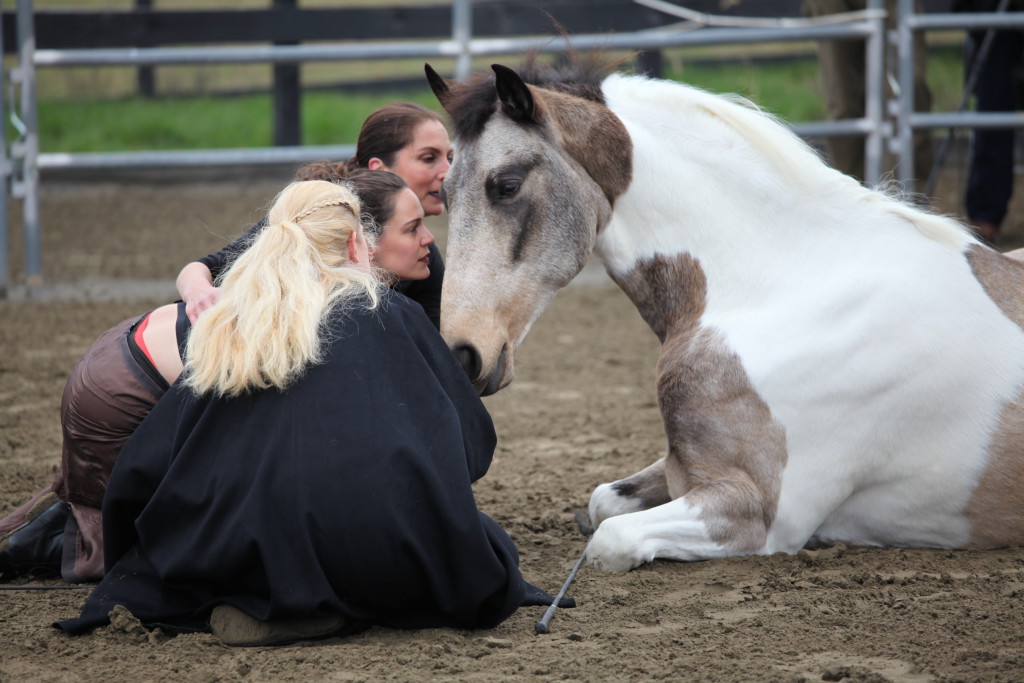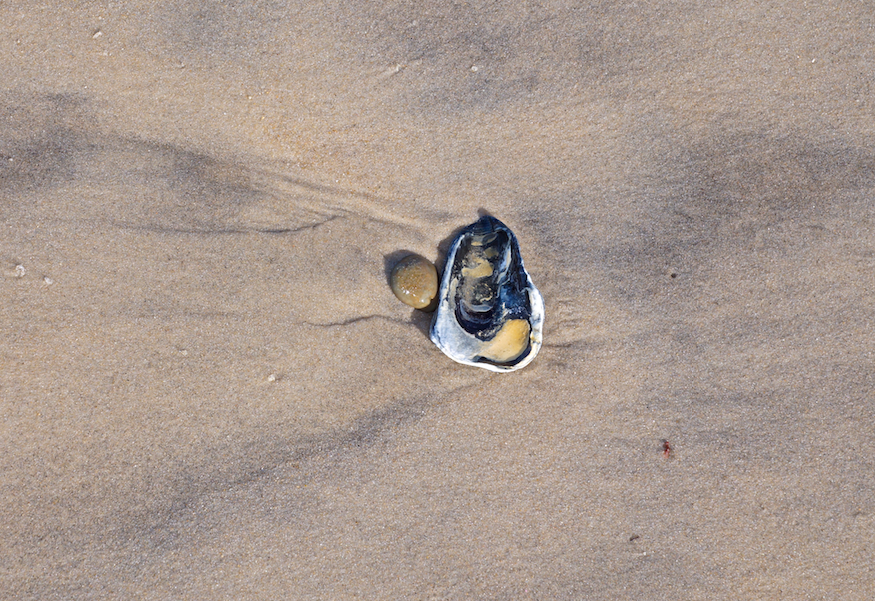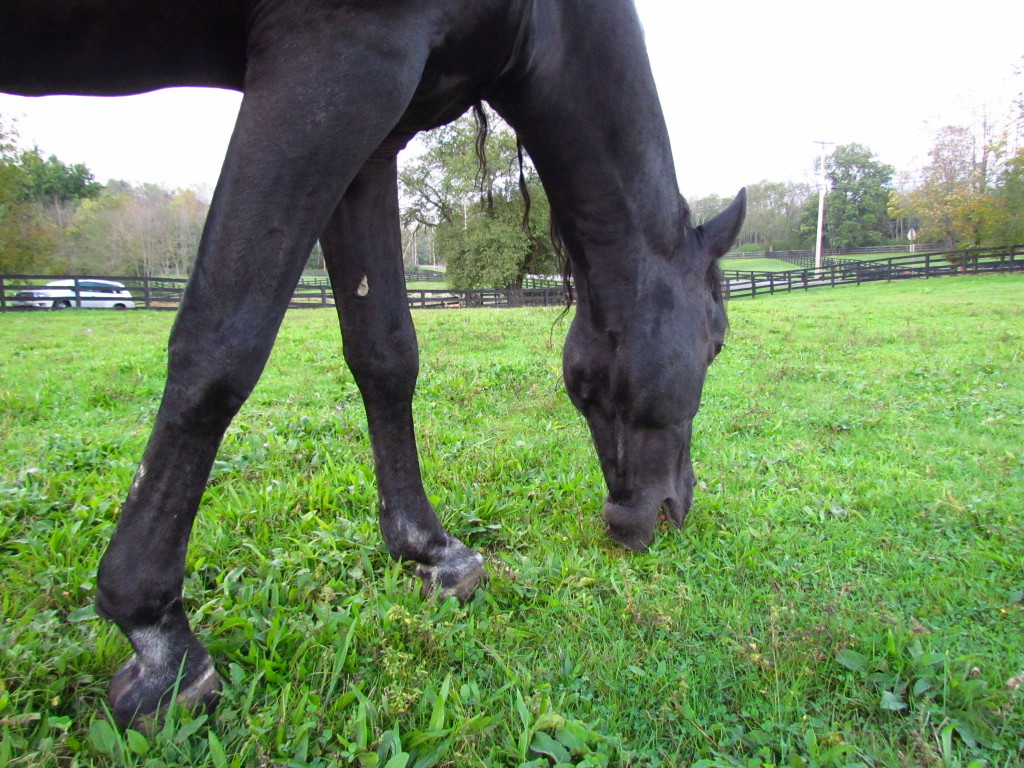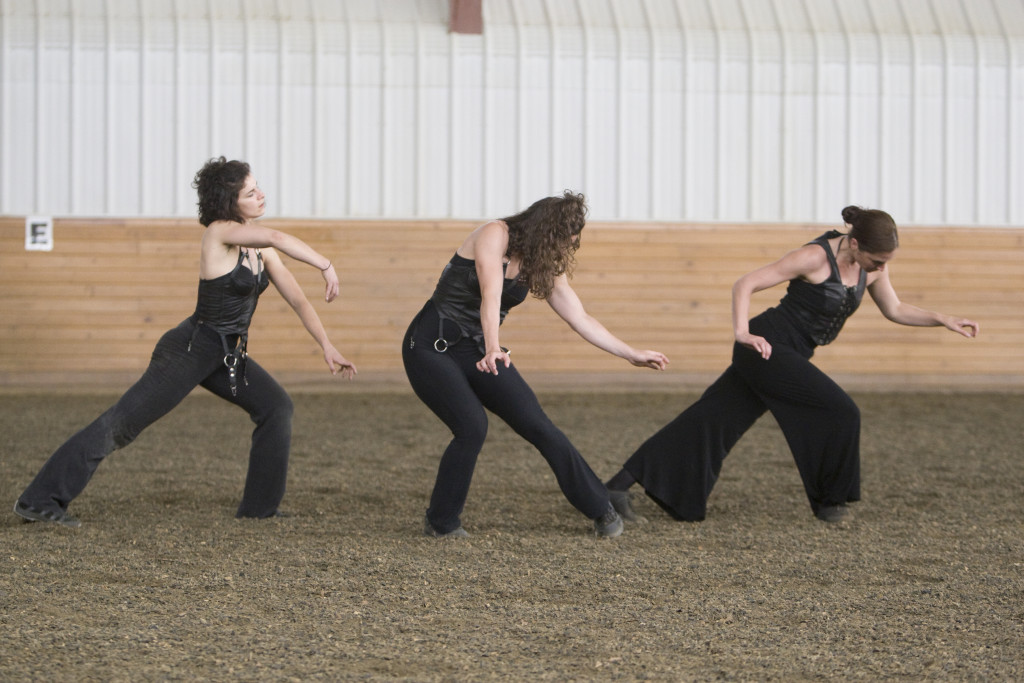 Dillon Paul, DeAnna Pellecchia and Ingrid Schatz in FLIGHT at Mistover Farm, Pawling, NY Photo: Jeffrey Anderson
Dillon Paul, DeAnna Pellecchia and Ingrid Schatz in FLIGHT at Mistover Farm, Pawling, NY Photo: Jeffrey Anderson
Yesterday I had the privilege of giving a webinar on working with horses and movement for the Somatic Experiencing© Trauma Healing Institute.
One of the things that I said during that talk was that for most people, movement is functional: about going somewhere or doing something. In that “going/doing preoccupation” much of the expressive world of our movement can be lost. We forget that we are all dancers. We forget to play, and that we are moving participants in a human/animal herd!
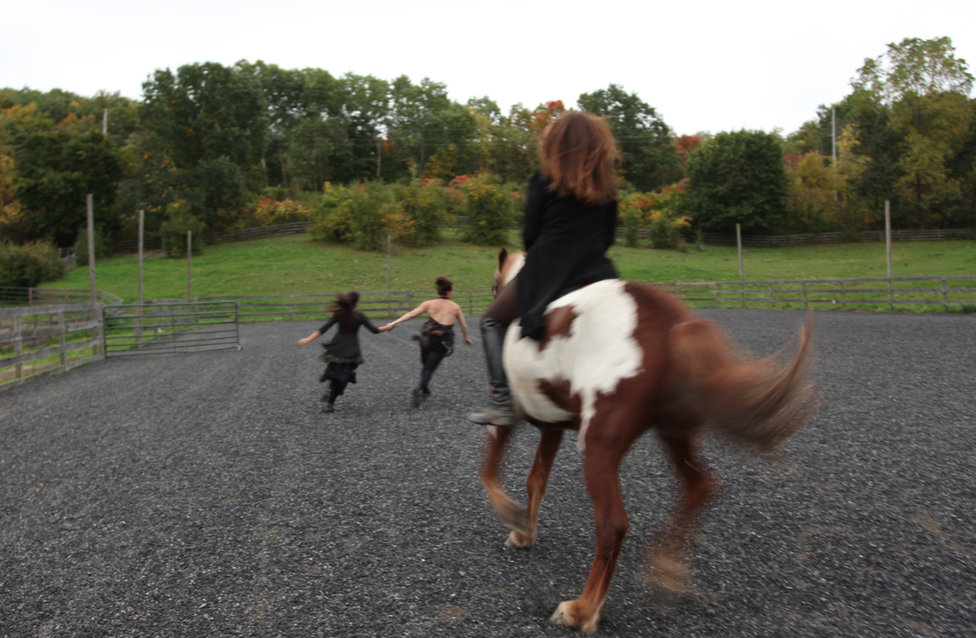 Chandrika Carl-Jones, DeAnna Pellecchia, Summer Brennan and Amado in ALL THE PRETTY HORSES at Little Brook Farm, Old Chatham, NY Photo: Pam White
Chandrika Carl-Jones, DeAnna Pellecchia, Summer Brennan and Amado in ALL THE PRETTY HORSES at Little Brook Farm, Old Chatham, NY Photo: Pam White
In my experience, by “waking up” the body, becoming more improvisational and playful in our movement interactions, becoming more aware of how we are moving and how that movement feels – we can begin to feel and connect to each other more clearly, with greater curiosity and fluency. After all, 60-80% of our movement interactions are non-verbal. Movement is our first and most important shared language!
The horses can help us with that. When I am working with a client or student, I focus on supporting her (or him) in listening inwardly to their own bodies, and in particular to any impulses for movement. If we are working with a horse, I may ask them to simply rest with their hands on the horse, noticing the horse’s and their own responses and the feeling in their own body. Breathing. Settling into a shared, breathing stillness. Feeling the play between stillness and whatever movement may be happening. Connecting the inside of themselves with the inside of the horse.
From there, instead of just moving the hands to another place on the horse’s body, or petting or massaging the horse, wait for an impulse from your own body to move your hands. If there is no impulse to move, just stay where you are. Be curious about that. When you do move, imagine moving from a sense of attunement with the horse. After moving, let yourself settle into the reciprocal (giving and receiving) feeling of that connection.
If you have questions about working with movement and horses, or would like to schedule a session or a clinic, you can contact me at pjj@paulajosajones.org
